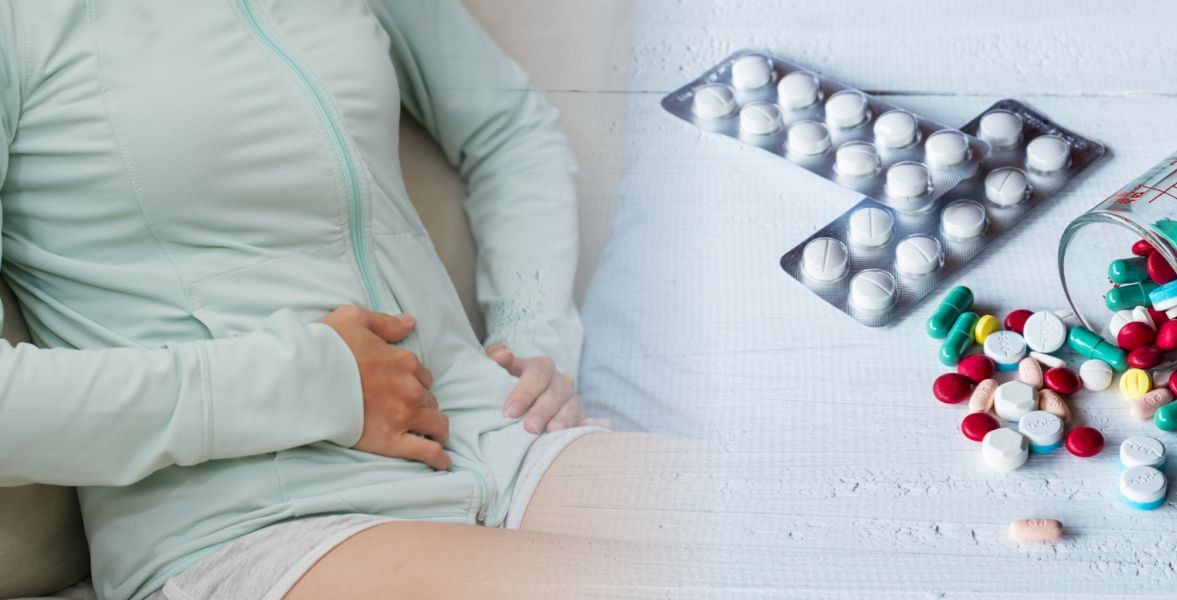Published - Tue, 02 Aug 2022

TREATMENT OF PELVIC PAIN
1. Vaginitis:
a) Infectious vaginitis:
- i) Fungal vaginitis
- — C. albicans vaginitis is treated with miconazole suppositories (200mg each evening for 3 to 7 days), oral fluconazole (150 mg orally once), or terconazole suppositories (80 mg each evening for 3 days).
- — Other fungal agents of vaginitis (e.g., Torulopsis glabrata) may be resistant to conventional antifungal treatment and may need longer therapy, repeated dosing, or systemic antifungal treatment.
- ii) Trichomoniasis is treated with oral metronidazole (2 g administered in a single dose). In pregnant patients, a 7-day course of metronidazole (500 mg twice daily) or clotrimazole suppositories (inserted each evening for 7 days) can be used.
- iii) Bacterial vaginitis is treated similarly to trichomoniasis. Metronidazole (500 mg twice daily for 7 days). Treatment with clotrimazole suppositories can be considered for pregnant patients with severe infections.
b) Foreign object vaginitis: Object removal and proper hygiene education.
c) Contact vaginitis is treated by terminating exposure to the offending agent.
d) Atrophic vaginitis is improved by applying topical estrogen cream daily for 5 to 10 days.
2. Cervicitis: Gonococcal and chlamydial infections are the focus of treatment for bacterial infection due to high frequencies of coinfection.
a) Gonococcal: Ceftriaxone (250 mg in one intramuscular dose) plus doxycycline (100 mg orally every 12 hours for 7 days). Doxycycline and tetracyclines should be avoided in pregnant women.
b) Chlamydial: Azithromycin (1 g administered in a single oral dose) or a 7-day course of doxycycline.
c) Viral: Herpes virus develops a latent state inside neuronal cells and cannot be removed from the body. To reduce the severity of the initial and reactivation symptoms, doctors may prescribe acyclovir (200 mg orally five times daily, or 400 mg orally three times daily for 10 days) or valacyclovir (1 g orally twice daily for 10 days).
3. PID:
a) Outpatient therapy: Ceftriaxone (250 mg administered in a single, intramuscular injection) plus doxycycline and metronidazole for 14 days.
b) Inpatient therapy: Appropriate regimens include:
- —A cephalosporin (e.g., ceftriaxone, 1 g every 24 hours; cefotetan, 2g every 12 hours; or cefoxitin, 2 g every 6 hours) plus doxycycline (by mouth or IV).
- —Clindamycin (900 mg every 8 hours) plus gentamicin (an initial loading dose of 2 mg/kg followed by a maintenance infusion of 1.5 mg/kg every 8 hours intravenously).
- —Ampicillin/sulbactam (3 g IV four times daily) plus doxycycline.
4. Ectopic pregnancy:
a) General therapy: To avoid the possibility of maternal Rh antibody development, Rho(D) immune globulin is administered as a single intramuscular injection to all Rh-negative mothers. Possibly within 72 hours following the first incident of bleeding.
b) Specific therapy
- i) Unruptured ectopic pregnancy: These patients are hemodynamically stable. Treatment options include:
- —Laparoscopic salpingostomy and ectopic excision.
- —Nonsurgical treatment with methotrexate, leucovorin, or mifepristone.
- —Salpingocentesis (i.e., transvaginal needle aspiration of the gestational sac, potentially with direct injection of methotrexate)
- ii) Ectopic pregnancy without cardiac activity: The obstetrician may choose to treat patients without surgery if their β-hCG levels have been serially declining and repeat sonography has revealed no signs of erosion or rupture. It is possible to induce evacuation using medication. If there is any indication of erosion or rupture, laparoscopic intervention is carried out.
c) Ruptured ectopic pregnancy: These patients may be hemodynamically unstable, necessitating prompt fluid and blood resuscitation as well as bruising control. Salpingectomy with laparoscopic ectopic excision is advised.
5. Ovarian cyst: If sonographic evidence of free fluid in the cul-de-sac is seen without the need for treatment, a patient with a confirmed cyst may be sent home with pain medication. Surgery should be performed on patients who show signs of bleeding that may be active or have hemodynamic instability.
6. Ovarian torsion: Patients should have a laparoscopy or laparotomy for exploration and attempted salvage if their history, physical exam, and sonographic results are suspicious.
7. Endometriosis: To stop ectopic endometrial growth, oral contraceptive methods, methyltestosterone, or progesterone may be utilized. In refractory cases, surgery is used to remove the tumor.
8. Dysmenorrhea: It is possible to try oral contraceptive medication to slow endometrial development. Nonsteroidal anti-inflammatory medicines, such as ibuprofen or naproxen, are used to try to control pain. Drugs like opiates are usually avoided.
DISPOSITION
—Hemodynamically unstable patients are treated with aggressive fluid resuscitation (with blood products) and taken to the operating room.
—Hemodynamically stable patients are admitted for observation and treatment when an evolving surgical disease is suspected or the patient is at risk for systemic toxicity.
—All patients who are discharged must-have follow-up arranged and verified before leaving the ED.
Created by
Comments (0)
Search
Popular categories
Latest blogs

All you need to know about Syphilis
Tue, 15 Nov 2022

What is Pemphigus Vulgaris?
Tue, 15 Nov 2022

Know about Scorpion Stings
Sat, 12 Nov 2022

Write a public review